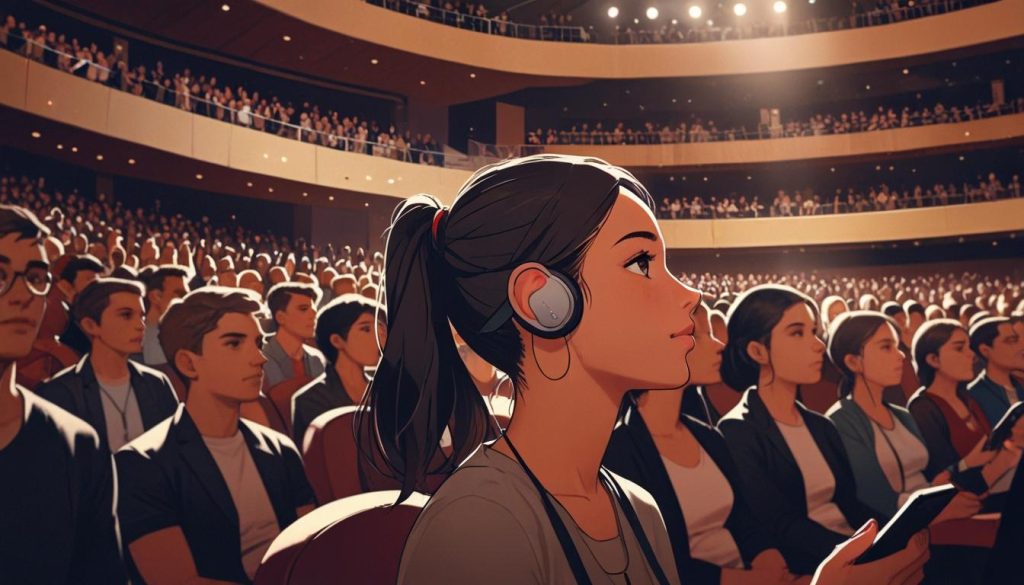Imagine stepping into a bustling venue like the Sydney Opera House and, instead of straining to hear the performance, you simply tap an option on your phone to stream the sound directly to your earbuds. Such an experience is made possible by Auracast, a revolutionary Bluetooth technology that allows audio from a single source to be streamed to an unlimited number of devices simultaneously. This innovation, developed by the Bluetooth Special Interest Group (SIG), essentially creates personal sound zones, transforming how we engage with our auditory environment.
The Sydney Opera House has already embraced Auracast by implementing it in its Drama Theatre, Playhouse, and Studio venues, with plans to expand its use to the main Concert Hall. The potential applications of Auracast extend far beyond high-culture environments, offering practical solutions for everyday situations: whether it’s filtering out the noise of a busy train station to catch announcements or enabling clear communication in a noisy bar. This technology is set to be a game changer for both the general public and those with hearing difficulties.
Apple’s enthusiasm for Auracast is noteworthy. Speaking at an event celebrating 40 years of the company’s commitment to accessibility, Sarah Herrlinger, Apple’s Director of Accessibility, described the technology as a “great next step.” While she did not confirm plans for integrating Auracast into AirPods, the anticipation surrounding Apple’s potential roll-out signals that this could become a widely adopted feature. In addition, Google has also backed the initiative; the latest Android 16 Beta supports Auracast, positioning it for rapid integration across an array of smart devices.
This widespread backing from major tech companies has sparked interest among audio device manufacturers. Brands such as JBL are transitioning away from traditional speakers in favour of Auracast-enabled devices, which reflects a shift in the market. Auracast could soon become a household name, particularly as more venues and electronics manufacturers adopt the technology to enhance user experience.
For individuals with hearing impairments, Auracast presents a significant opportunity to improve daily life. The technology offers a solution to the common issues faced by those hard of hearing, granting them easier access to information without harassment from ambient noise. Companies like Audeara are well-positioned to capitalize on this development. With a focus on personalisation in hearing technology, Audeara offers Bluetooth headphones that not only stream audio but also adjust sound frequencies tailored to individual hearing profiles—an innovation akin to personalised prescription glasses.
The timing is propitious for partnerships such as Audeara’s licensing strategy, which allows larger companies to integrate their technology without heavy investment in proprietary solutions. The company’s CEO, Dr James Fielding, has been vocal about its plan to leverage licensing to scale its innovations, especially in light of the rising demand for accessibility-driven audio solutions. This strategy aligns seamlessly with Auracast, as more tech brands will likely opt to incorporate Audeara’s tailored solutions into their own product lines.
Furthermore, Audeara has seen impressive growth and diversification in its operations. They have recently secured a foothold in China through a partnership with Eastech, aiming to develop advanced hearing devices under local regulations. The partnership represents a significant step in Audeara’s ongoing mission to expand its influence in international markets, which is increasingly valuable as the world becomes more attuned to the necessity of accessible audio experiences.
With more brands embracing Auracast and advancements in audio technology creating new possibilities, the future of audio accessibility looks promising. Auracast has the potential to become the next-generation assistive listening system, catering not just to those with hearing challenges but offering an enriched listening experience for all. This shift not only makes auditory environments more inclusive but also fosters a culture where accessibility is seamlessly woven into the fabric of technological innovation.
As this technology matures, the intersections between accessibility and user experience will likely redefine how society engages with sound in shared spaces, offering clearer, more direct communication that enhances participation—in concert halls, public venues, or everyday environments.
Reference Map
- Paragraphs 1, 2, 4, 5, 6
- Paragraph 4
- Paragraphs 2, 4, 6
- Paragraphs 6, 7
- Paragraph 2
- Paragraph 7
Source: Noah Wire Services





